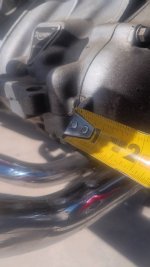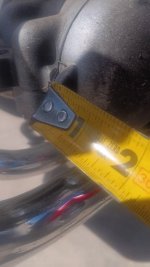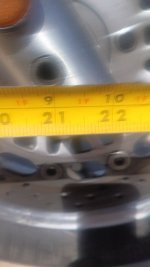I’ve just recently fitted YSS to my R111, so still experimenting. At the moment, from standard setting. No ride height, three full turns off on spring compression, 3 clicks on dampening.
So at the moment, the steering is slow and I physically have to counter steer to get her to drop in to a corner! So I’m adding two and half full turns on the ride height.
It’s ok two up, but the rear suspension is still a little harsh, so I’m going to take out another full one and half turns on compression. I’ll then add more or less clicks on the dampening as or when the long haired RSM is on the back.
Many bikes ago I had a 1200 Daytona, I went to the UK’s WP importers. They fitted a set of their fork springs and a rear shock which had all the bells and whistles! They then performed that “Black Art” of set up, I was honestly gob smacked! It turned Triumphs bike into something else, the steering was sharp but not extreme, compliant comfortable and totally positive.
They even gave me the setting for when I went out with camping gear or “her in doors”.





